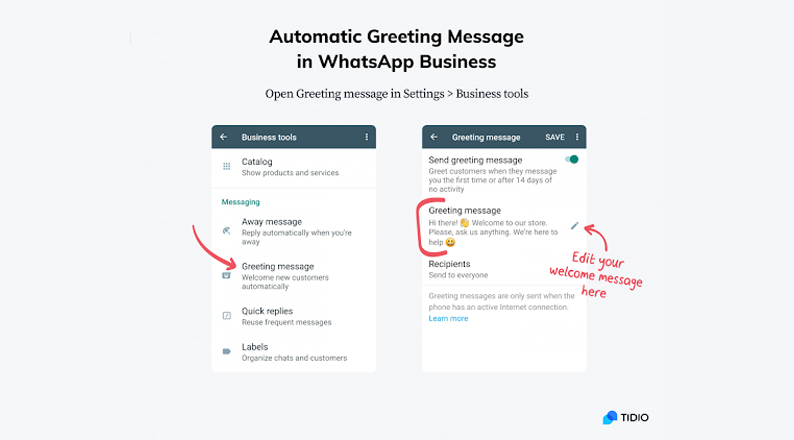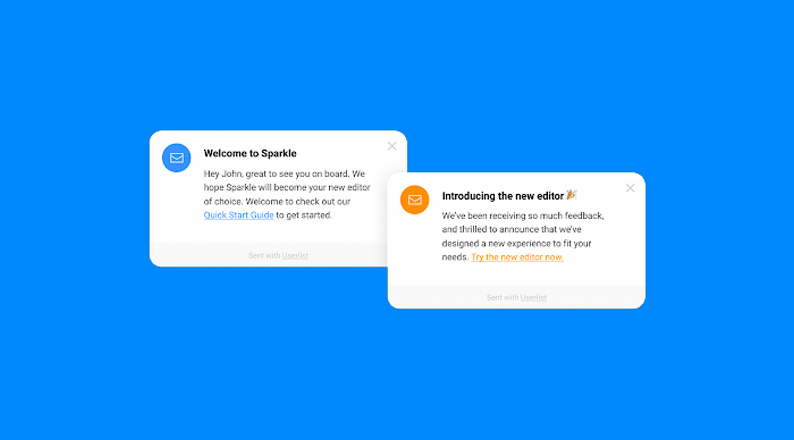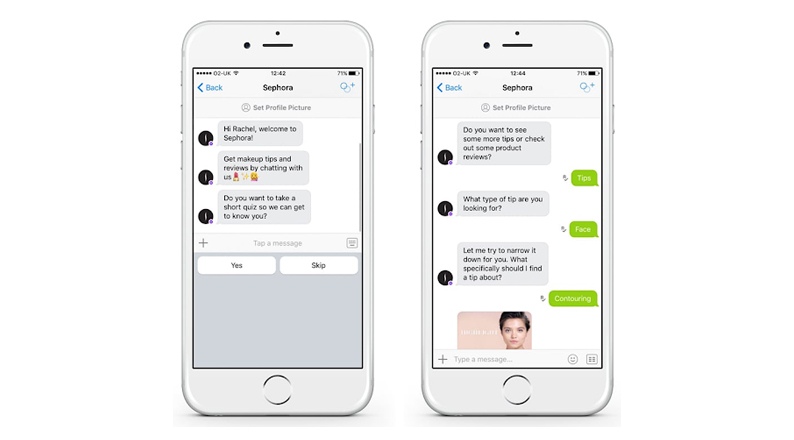We have lived in a product economy where brands compete with one another to offer the most satisfactory items at the lowest rates for a very long time. But it hasn’t been an easy race due to big eCommerce giants like Amazon and Alibaba.
If you aren’t a worldwide juggernaut and can’t afford to undersell your high-quality products without hurting your business, it doesn’t mean the chances are against you.
According to the most recent trends, a brand’s ability to provide a good customer experience has a greater influence on conversion than its prices or products do. Evidence indicates that over 80% of customers are willing to spend more for a better experience.
To improve your customer experience, you need to know about conversational commerce tactics. You may enhance the customer experience by engaging in friendly, straightforward dialogue with your clients.
In this article, we’ll cover the importance of engaging with your audience and several approaches to achieving this goal.
What is Conversational Commerce?
In this new eCommerce model, businesses and customers interact with live agents and AI assistants to learn about products, conduct transactions, and request services or assistance with purchases.
When you know about conversational commerce, you will discover it is easy to learn about the items you care about and decide whether to purchase them.
Additionally, it allows businesses to give customers the kind of quick, tailored guidance that increases their satisfaction and strengthens their bond with the brand.
Brands can utilize conversational commerce to forge better relationships with each query, declaration, assertion, and statement made in a conversation rather than depending on one-way email marketing, digital ads, or other conventional brand messages.
According to research done by WebsiteBuilderExpert, 91 percent of clients worldwide desire immediate assistance.
Speech and chatbot technology is anticipated to generate $290 billion by 2025. 1.4 billion people use chatbots, with a third of the US population using them. Conversion rates can be increased via live chat by 82%.
Types of Conversational Marketing
Now that you know about conversational commerce, it is beneficial to be aware of the various types. In the majority of these types, you have had direct contact.
The type of conversational marketing to use depends on your business type. You must now understand why they are significant to the company and the clients.
1. Live Chat Software
Due to the simplicity of real-time help it provides, live chat for apps or websites is customers’ most favored communication method.
Providing a platform for real-time consumer communication achieves 73% customer satisfaction, as opposed to merely 61% for email and 44% for phone.
Meaningful engagement fostered by online chat increases customer satisfaction and lowers customer turnover. It offers excellent customer service and quicker support.
Based on their behavioral insights, live chats assist in the proactive engagement of inactive or undecided website users.
Why should you use the live chat in your business?
- Real-time consumer convenience
- Faster response times
- Increased customer satisfaction and loyalty
- It is easy to identify a client’s pains through chats history
- There is increased conversion of sale
Below are examples of areas to apply live chats to your conversational commerce:
1. Using live chat to engage new visitors immediately
A welcome message on your homepage will actively encourage visitors to participate in sparking more dialogues. Your support and sales teams can also direct any messages they send to the appropriate division.
Below is a WhatsApp business account that immediately welcomes the customer when they contact them. This makes you and the customer go directly to the point, thus saving time. You can easily edit the welcome message to your preference at the greeting message icon.

Whatsapp Business Welcome Message – Image Source: Tidio
2. Sending targeted messages to high-value visitors
Instead of sending the same generic message to all high-value visitors who arrive from a particular location, you can boost engagement by automatically introducing them to a live chat agent.
You can locate these potential customers by integrating your live chat platform with an intelligence service like Clearbit.
An illustration of a company that has a regular client is shown below. The business has realized the services their client requires most and has directed a special agent to serve their needs.

Live Chat with a Special Agent – Image Source: REVE Chat
3. Reaching out to regular visitors
You can presume a visitor is interested in purchasing your goods or trying to contact someone at your company if they return frequently and spend a lot of time on specific pages.
If they have any queries, you could simply offer to answer them in your reply or inquire as to what led them to the product page.
Some companies that have successfully incorporated the live agent type of conversational marketing include Anchor and Crew, a British bracelet manufacturer, and Human Solution, which deals with ergonomic furniture.
2. Chatbots
A chatbot is a software or a computer program that mimics human conversation through voice or text exchanges. A good company incorporating chatbot is American Leather Furniture.
More users are using chatbot virtual assistants to complete simple tasks in business-to-business (B2B) and business-to-consumer (B2C) situations.
Chatbot assistants allow businesses to provide customer care when live agents aren’t accessible, cut down on overhead costs, and make better use of support staff time.
Chatbots can be stateless or stateful, and their levels of complexity vary. Stateless chatbots approach every interaction as though it were with a different user. Stateful chatbots, on the other hand, may look back on previous conversations and contextualize new responses.
If you know about conversational commerce, you realize that customers prefer prompt responses and that delays might cause them to visit a rival website.
The proper natural language processing (NLP) engine needs to be chosen before using a chatbot. For example, a chatbot will need a speech recognition engine if the user communicates with the bot by voice.
Businesses can apply chatbots in the following ways:
- Online purchasing. Sales teams can respond to simple product queries or give useful details that customers can subsequently look up, such as shipping costs and availability.
- Customer support. Service departments can use chatbots to assist service personnel with routine queries. When a conversation becomes too complicated, a chatbot transfers the call or text to a human support person.
- Virtual helpers. A virtual assistant is a freelancer who focuses on providing administrative support to customers from a remote location. A personal chatbot can be modified to perform this role.
Here is an example of a chatbot welcoming you to the business platform to connect you with a live agent after explaining your needs.

Welcome Message Chatbot – Image Source: Tidio
3. Messaging Apps

Messaging Apps – Source of Image: Trengo
Nearly every company uses at least one messaging app to communicate with its customers regularly. Customers are eager to utilize the applications since they provide private communication with brands, brand touch, and online purchases.
These apps have eclipsed social networks. Natori is a big eCommerce taking advantage of Facebook Messenger. It deals with home decor, lingerie, home accessories, etc.
Also, widely used messaging apps now permit using emoticons, GIFs, videos, and memes, which keeps the dialogue light and increases client engagement. As a company, you can also communicate with your employees via various chat applications.
Getting to use these apps will make you know about conversational commerce impact on your business teams and clients. These apps include Stack, Microsoft teams, WhatsApp, Facebook, and Instagram.
4. Voice Assistants
Voice assistants like Siri, Alexa, Cortana, and Google Assistant are a function that accompanies different modern gadgets. Customers adore them because they are practical, entertaining, and allow for multitasking.
In the United States in 2021, there were around 120.4 million voice assistant users, representing 46.2 percent of the population. By 2025, 130.1 million people are anticipated to be using voice assistants.
The digital assistant makes your business processes to be streamlined. The AI programs never stop working, thus suitable for your customers at any hour of the day. You quickly evaluate data, access reports, and keep systems updated by learning your clients’ behavioral trends.
The burden of remembering all critical dates, deadlines, and scheduling has been eased by the voice assistants giving your staff members more time to perform other tasks and cutting costs that would require extra employees.
Benefits of Conversational Marketing
The good thing is that if you know about conversational commerce tactics, you can provide the same services as those brick-and-mortar stores. The distinction is they can get these services from the comfort of their homes.
You accomplish your company objectives more quickly by taking care of your customers. Below are some of the benefits of incorporating conversational marketing:
1. Reduction of Cart Abandonment
Many cart abandonments result from how customers browse the eCommerce site. Some customers may be doing window shopping, comparing prices, and looking into gift options.
It may be hard to prevent cart abandonment, but engaging the customers through a live agent or chatbot can gain you a client purchasing your goods and services.
One of the factors that will scare customers is the high shipping fee and complex account registration and checkout procedures. It is your duty to investigate why your clients are abandoning their carts.
You should utilize:
- Proactive greetings through live chats to customers having items in their carts.
- Use the Facebook messenger plugin that detects ongoing facebook sessions that enable communication with users with orders still in progress.
- Utilizing systems can make you access customers’ numbers for reminders through SMS.
2. Aids in Closing Promising Leads
Making sales is ultimately the aim of any firm. If you are available to assist a consumer when they run into trouble, they will finish their purchase.
In addition, 71% of customers claim they would spend more money with a company that offered them the choice to send a message rather than phone.
Most customers visiting your site want a reliable way of purchasing your goods. Incorporating live agents and voice assistants is a win for any online store trying to close a deal. It shows you have the interests of your clients in your heart.
Below is a conversation that will likely end up with the customer purchasing what they are looking for.

Live agent services: Image Source: Vizury
3. Offering Feedback
Obtaining client feedback through casual discussions is far more efficient than using standard web forms.
You can utilize a Facebook post response tool. Every person who leaves a remark on one of your Facebook posts can receive a chatbot message from you.
For instance, you could write a post promoting your most recent offer and invite users to submit comments for more details.
Collecting feedback helps in knowledge gaps in your store and customers’ wants. After knowing this, you get to improve on the weak areas, thus boosting your sales.
4. Helps in Building of Customers Loyalty
Customer loyalty includes more than just repeat purchases; it also includes returning visits to read content and referrals of others to your website.
Customers will undoubtedly stay loyal to your website if they feel warmly welcomed and the service provider is engaged throughout the purchasing process.
There’s a good chance that you’ve heard somebody claim, “That’s the best place to buy electronics.” Only satisfied customers will make such claims.
You can share promotional discounts with a chatbot. Customers adore receiving promotional coupons and frequently interact with businesses that provide them.
What To Consider Before Using Conversation Marketing
The majority of big-box retailers now engage in conversational commerce.
As a small firm, you might be unsure about where to start and whether the approach will benefit your operation, given the limited resources.
Here is what you need to know about conversational commerce for a successful journey.
1. Analyzing Your Business Needs
The first thing is to consider the issues your team and clients are encountering before implementing your chat tool. Set attainable objectives that you want to accomplish.
Don’t rush into a conversational tool without knowing whether it will solve the problems. Otherwise, you will be creating more problems for your entity.
After your dream list is ready, group and prioritize your goals to decide which of them are the most crucial for your business, this is important because you might be unable to turn all your processes around at once.
2. Conduct Intensive Research
Researching other businesses that have used chat tools won’t cost you anything. List all of the options you have for solutions after doing your study.
To learn about the advantages and disadvantages of each option, request demos and join up for free trials.
If you already have a solution or channel in mind, find out the most well-known and exceptional instances that you may use as inspiration.
List all of the options you have for solutions after doing your study. To learn about the advantages and disadvantages of each option, request demos and join up for free trials.
If you already have a solution or channel in mind, find the most well-known and exceptional instances you can use as inspiration.
3. Partnership
You don’t need to be an expert in marketing to run a firm. Team up with someone knowledgeable in that area now that you know what kind of chat tools to employ.
You need someone who knows about conversational commerce tools and can teach different team members how to carry out different tasks.
For instance, you will need to train a live agent when to intervene after a chatbot or virtual assistant activity. This will help save time and prevent the customer from leaving your site due to delays.
By doing this, it will be made sure that the purchasing procedure is seamless. The buying process starts as soon as a customer visits your website.
4. Launching the Tool
Now that your team is prepared for business and you have chosen a conversational tool, it is essential to know the key performance indicators (KPIs).
Your KPIs enable you to assess your progress, provide guidance on which approaches produce the best outcomes, and let you know which require revision or improvement.
Once everything is prepared, you may use conversational commerce right away.
5. Measuring Success
Checking in on your development is usually a brilliant idea. We have discussed various gauging success tools that might assist you in the review process.
The procedure aims to determine whether the conversational commerce you are using is affecting your clients and your business.
Wrapping Up
Getting started in the conversational commerce game may be challenging if you are unsure where to start and on a strict budget. The good news is that you may easily explore various chat tools thanks to technology’s accessibility.
It is possible to find statistics on the performance of various tools on various blogging platforms. You must make the extra effort to determine how the devices affect the firm. It is evident that live agents perform better in most giant firms.
Depending on the sort of business, each chatting tool offers pros and cons. Chatbots, voice assistants, and messaging apps are becoming more and more common. Make sure to benefit from this eCommerce trend.
Acowebs are developers of WooCommerce plugins that will help you personalize your stores. It supports the additional option with feature-rich add-ons which are WooCommerce Product Addons, that are lightweight and fast. Update your store with these add-ons and enjoy a hassle-free experience












 Login
Login
 Cart
Cart







